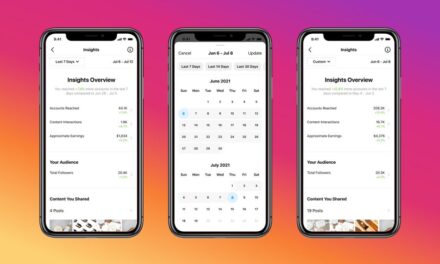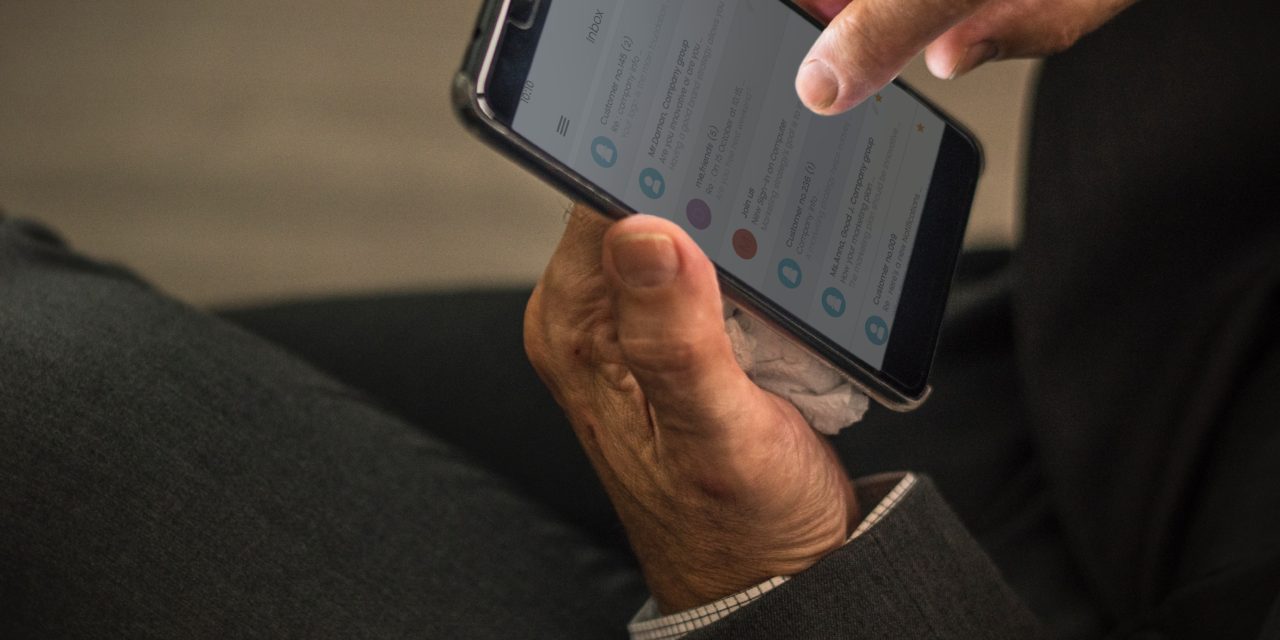Repost from: https://marketingland.com/stop-monthly-newsletters-learn-how-to-make-the-most-of-your-email-list-250571
Your email list is one of your most prized possessions.
With users becoming increasingly skeptical of subscription pop-ups and “freebie” opt-ins, getting people to join your list has been difficult for business owners and marketers alike. Once you find a method that works and can grow your list over time, you want to be sure that you are putting that list to good use.
Unfortunately, you may be finding that your monthly newsletters or even weekly updates are ending up dead on arrival. That is, open rates on your emails are low, click-throughs are even lower, and you don’t see near the number of sales you expected.
The “aha!” moment here is that your email marketing, like every other channel, involves a strategy. If your approach isn’t research-based or purpose-driven, you are sending stale content to a lukewarm audience (at best), and aren’t making the most of that fantastic list you worked so hard to build.
Let’s chat about how to take a more intentional, strategic approach to email marketing – and say goodbye to those monthly newsletters for good.
You love your email campaign, but it’s just not working out
If you don’t know why something is broken, you won’t know how to fix it.
But before you even jump into that, there’s a very crucial first step that you need to take: acknowledging that it’s broken in the first place.
If your open rate is high and you are raking in the dough, then, by all means, move along. But if one or a few of your metrics leave much to be desired, then you’ve got a broke email campaign on your hands.
The evidence of this should be in the data. No matter what platform you are using, you should be tracking opens, clicks, conversions and more. If you’re not, then you won’t know what is working and what isn’t. If you don’t know how to measure this, contact a content marketing or digital marketing pro to help you.
Having the data right in front of your eyes will be the “proof in the pudding” you need to know that your email campaign is broken and that something needs to be done. Whether you are writing emails yourself or working with a copywriter, you need to be sure that you are getting a return on your investment (whether that’s time or money).
Once you acknowledge that it’s not working, it’s time to ask the big question: Why?
Why your monthly newsletter isn’t working
Sorry to disappoint, but there is no one clear answer to this question. There can be many reasons why your emails are falling flat.
Overlooking any technical issues that may be related to the platform you are using, let’s focus exclusively on messaging. Whether you are sending monthly newsletters or have crafted a more robust campaign, the reality that your emails are not converting is most likely due to content.
Think of any time you have gone to your inbox and have seen an email from one of the brands that you follow.
What makes you want to open it?
Or, what makes you want to send it to the trash bin?
Something like “August Update” is less likely to catch your attention than “Have you seen this?” Or,“Are you making these 3 SEO mistakes?” The first is generic and impersonal. The others are direct, intriguing and engaging.
While sending out a newsletter or campaign to your entire list may seem like the best way to cover all of your bases, it’s a poor approach on many fronts. For one, people are less inclined to engage with an email that they think is sent to the masses. They are also less likely to engage with something that is cryptic and generic. Then, there’s the dreaded “clickbait.”
The sweet spot here is in sending targeted emails to a segmented list using content crafted to their concerns, needs and wants. Something your audience wants to open, read and purchase.
So, how do you do that?
Segment your list from the get-go
If you only have one email list built from a single “Sign up for our newsletter!” opt-in from your website, you’ve got a problem.
While better than nothing, having a single, generic list tells you very little about your audience. If you have a couple of lists from different campaigns or forms on your site, then you are in a slightly better spot.
If this is your current situation, fret not. Segmenting your list and getting as much information about your audience from the get-go will help you to craft emails that truly resonate.
How to segment your email lists
Say you have a free ebook, a newsletter subscription form, and are running a Facebook ad for people to sign up for a webinar.
Right away you can identify these are three very different groups of people.
Those who want the free ebook may be looking to take the DIY approach and aren’t quite ready to buy.
Those who subscribed to the newsletter may be brand fans wanting to hear more about what you do.
Those that signed up for the webinar may be professionals looking to gain insights into strategies to apply to their own business.
Familiarize yourself with your email marketing platform and create a new list of each type of audience. Then, develop a strategy based on where s are at in their buyer’s journey and craft the content of your emails to speak directly to them.
Nurture your list with care (and great content)
Once you have your segmented lists built, “nurture” your list.
I like this word because it implies taking care of your audience. Nurturing your list involves a strategy of sending emails that are not only cohesive in tone and brand messaging, but that speaks directly to your audience every single time.
Every email is an opportunity to build trust. Every email is an opportunity to move them along that buyer’s journey. Push sales on them too quickly and you can scare them off. Move too slow and you can bore them to death.
Tailoring your campaigns to each list
Think back to what attracted your subscribers to your list in the first place. You already know what they signed up for so don’t veer from this too much. If out of nowhere you start pitching services, they will feel like you betrayed their trust. Be sure to give them immense value, with the occasional pitch for free content. This audience is likely very early in the buyer’s journey.
The webinar, these are your go-getters. These are the people that are dedicated to putting the strategy into action and are willing to invest at some time into watching a webinar and setting things into motion. This audience is likely looking for the “meat” of your content.
You can send them an email that addresses their struggles directly, such as the topic of “Tired of wasting your budget on Adwords?” Here’s the foolproof method all SEO pros are using.” Send them your latest case study or thinkpiece on one of your strategies. You are warming them up the idea that you can be trusted and know what you are talking about. Once they decide that they don’t have the time/energy/skills to do things themselves, your brand will be fresh in their minds.
Outlining your email sequence
By this point, you know that the one monthly newsletter just isn’t going to cut it. Once you get deeper into understanding what your audience wants, the ideas will start flowing in. Before you know it, your usual templates and scheduled emails will fall by the wayside.
However, before you start writing emails just off the cuff, you will need to plan out your campaigns. Not only will this help you stay organized, but it will make your emails more cohesive and effective.
The best campaigns leave your audience wanting more and eagerly awaiting your next email. That’s why sending multiple emails in a sequence is better than waiting an entire month. The former gives them something to look forward to, meaning that they will be more likely to click on it. The latter gives them way too much time to forget about you.
Outline a sequence for each list that makes sense for where they are in their journey and what they need and want next. Don’t pitch right away. Give subscribers a taste of what your brand is about, what you can do for them (for free), what your existing customers are saying and what your lower value offers are.
Using the “ebook list” as an example again, here’s what a simple outline may look like:
- The “Thank You” email: This email just reminds them that you opted into your list and received an awesome ebook for free. You hope they enjoy it and they can message you with questions any time (this keeps the line of communication open and makes you feel more like a person than a bot).
- The Follow-Up: After some time has gone by (no more than a week), ask them how they enjoyed the ebook. Give them a brief summary of what was covered, in case they haven’t gotten around to reading it yet. Again, remind them that you are available if they have questions.
- The Refresher: Cover at least one points of the ebook in depth. Say something like, “Remember the section about Social Media Marketing? Here’s a breakdown of how to optimize your Instagram profile.” Include the breakdown in the email or link to a blog post.
- The Related Offer: This can be a soft pitch for either another freebie (such as a webinar) or a lower value offer like a social media audit or something else you think will help them out. The key here is that it is something they actually want and need. Don’t pitch them on some other random offer that’s not related to what you covered in the ebook.
Notice that I didn’t include a final pitch here for your higher value offers. It will take time for them to get there. “The Related Offer” presents the opportunity to segments the “free ebook” people from the subscribers that did end up buying from you.
The people that bought from you are likely to buy from you again if you send them higher value information and offers. Those that just want the free content will eat up the free content until they are ready to buy.
When can you pitch to them?
The people that are ready to buy are the ones that are engaging with your content and lower value offers. Maybe by that point, they are on several lists and have joined a webinar, have subscribed to your newsletter, and have even responded to your emails with questions.
Depending on your sales process, you will want to take a low stakes sales approach with them. It can be in the form of a free or paid consultation or a $500 offer.
If they bite, then they have joined your funnel and you can continue through your sales process as you usually would. If they don’t, no harm, no foul, as they will still be on your list for you to nurture over time.
Crafting the “perfect” email
Once you develop an outline of your email sequences you can begin writing your content, launching your campaigns, and testing them out.
Now, if writing isn’t your forte, it’s truly worth it to hire a copywriter or content marketing expert that can effectively articulate your message. As with any marketing campaign, your return on your investment is what matters. A great writer will help make you money through your email campaigns.
If, however, you are a decent writer yourself or have an in-house team that handles content, there are a few suggestions to follow to help increase conversions on your emails.
Write an awesome email subject line.
Your subject line is the first thing people notice, so it’s important to grab their attention. Lead with intrigue and something that is of interest of them. “April Newsletter” or “Check out our new post” just aren’t going to cut it.
Write a solid preview.
Most email platforms offer the ability to add an additional line of text as a preview of your email. This is where you can offer a better hint of what the email is about.
For example, if your subject is, “Your competitors can’t hold a candle to this…” then a good preview would be, “The #1 content strategy that will take you to the top.” You can hook them with intrigue but still let them know that the email is about content strategy.
Make it as brief or as long as it needs to be.
People are busy, and if you are going to pop into their inbox with a message, you better get to the point fast.
Your emails are not a place to drag on and on. They should essentially have one purpose per email. That way, people understand what the email is about and what action they should take. Make it as long or as short as it needs to be to get to the point.
Tell a story.
People are more likely to relate to stories than some salesperson telling them what they should know. If you want to share value with your subscribers, relate it to their experience or things in everyday life. This also makes it easier to leave a sequence that leads them onto the next steps (or scenes in the story).
Keep them interested.
Don’t give them all of the answers at the beginning. Your goal is to have them click, respond, or buy. They won’t do that if you give them all of the information in the email itself. Keep it brief and then make it super clear where they can go to get more information.
Don’t make your call-to-action too complicated.
Even though you may feel like you want to be thorough, you actually hurt your chances of getting click-throughs if you offer the subscriber too many options. Saying “Give us a call for a custom quote or check out our blog for more information” is one too many actions for them to take. It’s okay to simply say, “Want to see the post? Click here.”
Remember, if you do this right, you will have other opportunities to pitch them down the road.
Keep it frequent.
Don’t leave them hanging. It’s okay to have a few emails back-to-back if it makes sense for what you are trying to convey.
That does NOT mean bombarding them with 5 emails per day, or 10 in a row. Give them the info that they need and then give them space.
Just be sure that you follow up when you say that you are going to, and if they subscribed to regular updates that they are getting them at regular intervals.
Test it.
Once you have run your campaigns for a while, check out the feedback. You will want to run split tests on things like subject lines and call-to-action placement to look for variations in opens and click-through-rates. Over time, you will figure out what works best for your audience. Even take note of things like length, images used, humor, formatting, or anything that distinguishes one email from another. This will help you fine-tune your emails over time.
Don’t let your email list go to waste
Having an email list of dedicated fans presents a great opportunity to connect with your people and pitch your services to a warm audience. Sending subscribers a monthly newsletter of updates and blog posts is impersonal and generic.
Segment your list so that you can craft email campaigns that relate directly to what they are interested in. Lay out your sequence ahead of time so that you have a solid plan. Finally, invest the time or money in writing great content that’s made to sell.















